Perth and Kinross Lieutenancy Etiquette and Protocol
This information is provided to assist those who are hosting an event to which the Lord-Lieutenant has been, or is to be, invited in an official capacity. Further advice can be sought or clarified with the Lieutenancy Office.
The Lord-Lieutenant is His Majesty The King’s representative and therefore should be received at any event with the same degree of etiquette and protocol as would be extended to a member of the Royal Family.
If, for any reason, the Lord-Lieutenant is unable to attend an event to which they have been invited and is represented by the Vice Lord-Lieutenant or a Deputy Lieutenant, the same etiquette and protocol should be followed.
The Lord-Lieutenant or his representative should be met on arrival by the host, or escorted to the host, and not be left unhosted for any part of the event.
Formal events
Briefing – When the Lord-Lieutenant accepts an invitation to attend an event, he welcomes a brief such as: background of the organisation and relevant information about the event, dress code, name of the person who will greet the Lord-Lieutenant or his representative upon arrival and an emergency contact number in case of a problem prior to arrival. Appropriate car parking should also be reserved, as near as possible to the point where he will be received.
Arrival of the Lord-Lieutenant – The Lord-Lieutenant will always aim to arrive at the time scheduled, which should be slightly later than that of other invited guests. It is usual for him to be received at the entrance of the venue by the host (the senior person present) and escorted by them, or other designated person, until such time as he leaves the venue.
Introduction – When a formal speech is made by the person presiding over the event, he or she should begin “My Lord-Lieutenant”.
Order of Service – Consideration should be given to including the Lord-Lieutenant’s presence in the Order of Service when he attends a Civic Service. This will assist the congregation in identifying him, as well as ensuring that he is permitted to leave before the other Dignitaries.
Seating – The Lord-Lieutenant or his representative, should be seated in the same place as you would seat a member of the Royal Family. The Lord-Lieutenant or his representative is seated on the host’s right. The Lord-Lieutenant’s wife is usually seated on the host’s left and the host’s spouse seated on the right of the Lord-Lieutenant. If spouses are not present, the second most important guest is seated on the host’s left.
Toasts And Speeches – If the Lord-Lieutenant is required to propose, or respond to, a Toast, or to make a speech, prior notice should be given in writing, detailing any relevant details or points you wish him to make.
At the End of an Event – Guests should not leave an event before the Lord-Lieutenant however, he appreciates that busy people may have other commitments which necessitate their early departure. The Lord-Lieutenant should be escorted from the function and guests invited to rise to acknowledge his departure.
Taking the Salute – When the Lord-Lieutenant is invited to take the salute at a march past, either following a service or at a formal event, it is customary for the host to join the Lord-Lieutenant on the dais, although normally one pace behind him. The host should also salute or remove headdress, as appropriate.
Award Ceremonies – When the Lord-Lieutenant is invited in a formal capacity to present an award, he does so on behalf of His Majesty and the Royal Prerogative applies. The Lord-Lieutenant, or his representative, takes precedence over all other guests. If people are seated, it is usual for the host to arrange for the Lord-Lieutenant to be announced upon entering the venue, so that those present may stand to acknowledge his status. The person making the announcement should do so by saying: “Ladies and gentlemen, please stand to receive the Lord-Lieutenant”.
Schools – pupils should rise upon the Lord-Lieutenant’s entrance and again on his departure, where appropriate.
Church Services – The Lord-Lieutenant should be met at the entrance to the Church and escorted to the front pew on the North side of the Church. Provision should also be made for the Lord-Lieutenant’s wife. The congregation should be invited to rise at the Lord-Lieutenant’s entry and upon his departure. The Lord-Lieutenant should enter the church immediately before the clergy and withdraw immediately after, with arrangements being made for the Lord-Lieutenant to be escorted to and from his seat.
Funerals and Memorial Services – The Lord-Lieutenant, or his representative, enters the church 2 minutes before the start of the service, immediately before the clergy, coffin and family, and leaves straight after the family. He is usually seated in the front row on the opposite side to the family or according to their wishes.
Other church services – For all other church services, the Lord-Lieutenant enters last, before the clergy, leaves first after clergy, and sits in the front row.
How to address the Lord-Lieutenant
Written: Stephen Leckie Esq, His Majesty’s Lord-Lieutenant of Perth and Kinross with the salutation “Dear Lord-Lieutenant”.
In a speech preamble: “My Lord-Lieutenant” followed by “distinguished guests” (by name or appointment, if appropriate), “ladies and gentlemen…”.
Conversation: Initially, the Lord-Lieutenant should be addressed as “Mr Leckie” or “Lord-Lieutenant” and thereafter “Sir”.
Should the Lord-Lieutenant be represented by the Vice Lord-Lieutenant, or a Deputy Lieutenant, he or she should be accorded the same protocol as for the Lord-Lieutenant and the above etiquette adapted accordingly. Please note that Deputy Lieutenants should be referred to as Deputy Lieutenants and not Deputy Lord-Lieutenants.
